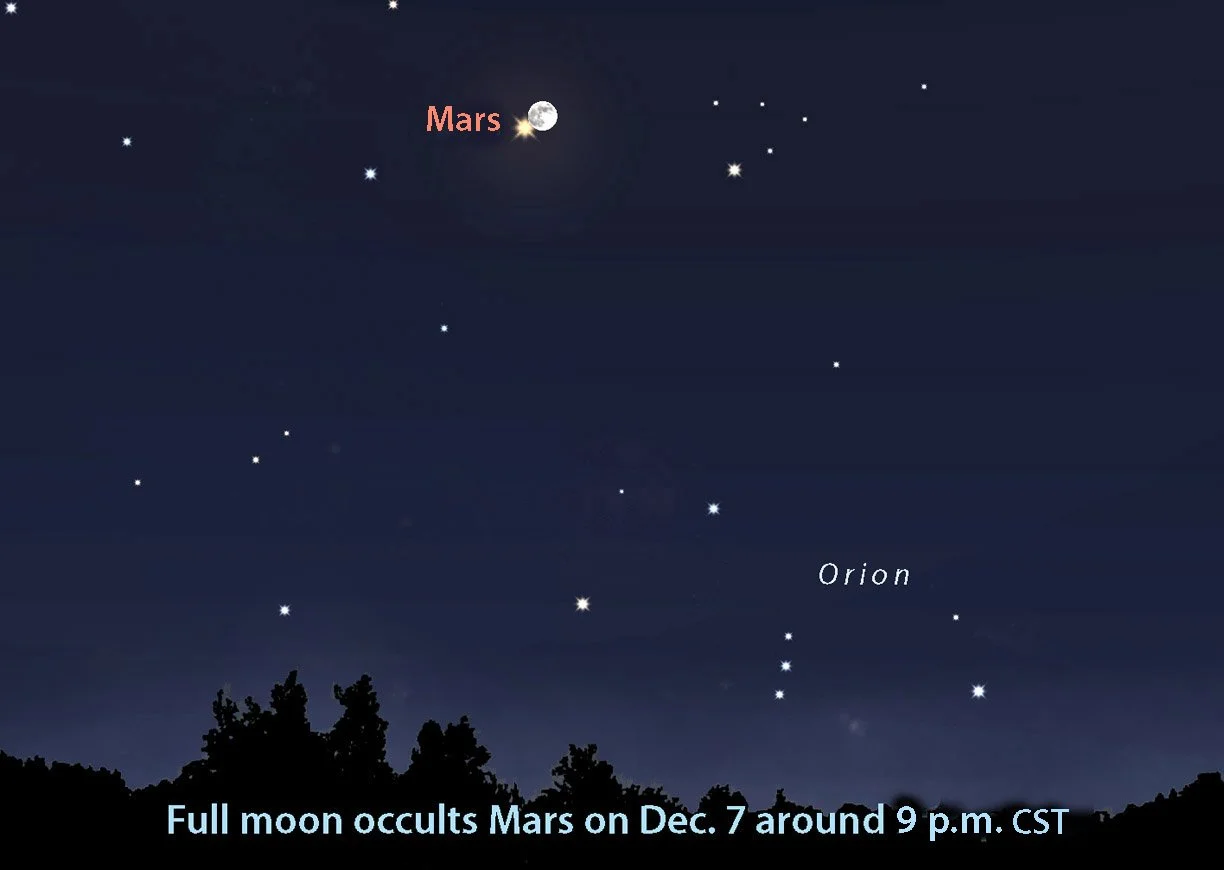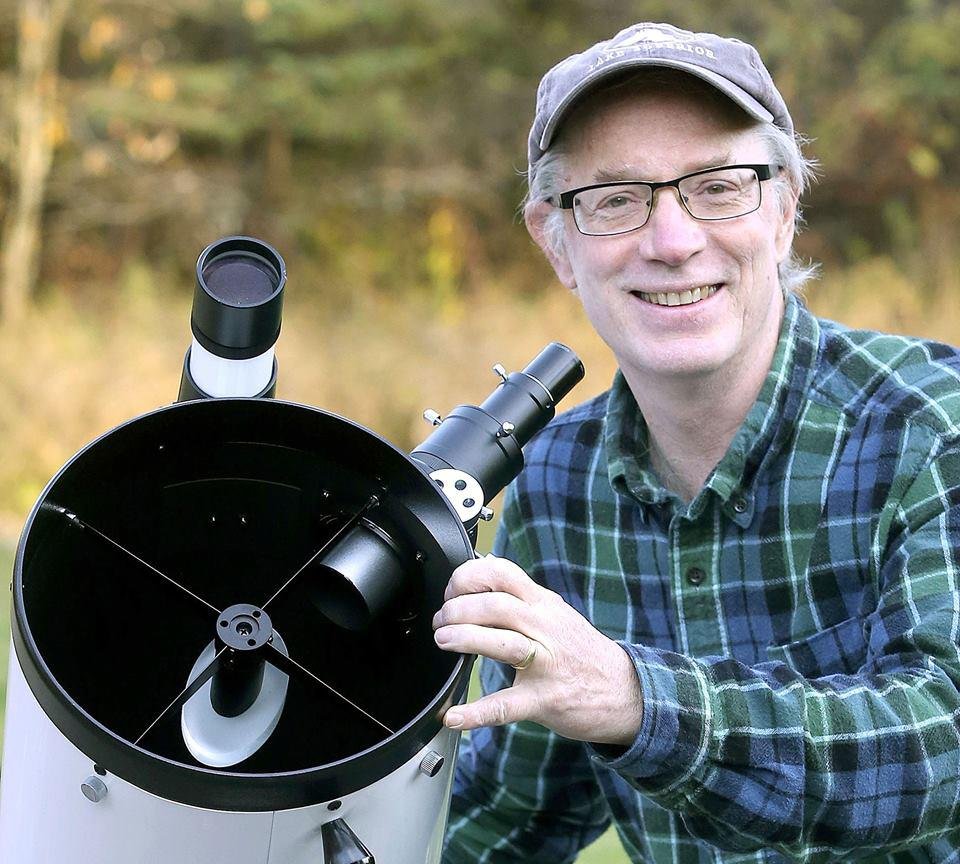December 2022 Night Sky Calendar
December 2022 Night Sky Calendar
Brilliant Jupiter, lording over the southern sky at nightfall, gets some competition this month from upstart Mars, ascending in the east. Mars and Earth will be at their closest in more than two years, making the Red Planet brighter than every star in the night sky.
On Dec. 7, the Full Moon will pass directly in front of Mars and covers it for up to an hour or more. The close pairing of two of the brightest night-sky objects should look amazing. From the Upper Midwest, the cover-up, called an occultation, begins around 9 p.m. For disappearance and reappearance times for a variety of cities, visit https://bit.ly/3TTSMwn Times there are UT (Universal Time). Subtract 5 hours for EST; 6 for CST; 7 for MST and 8 for PST.
Mars Occultation
The second big highlight is the Geminid meteor shower, the richest of the year. Although the waning gibbous moon will flood out the fainter shower members, it should still be a good show. Finally, the planet Venus returns to view low in the western sky at dusk at month’s end.
Wishing you merry nights under the stars and the pleasure of warming up indoors afterword!
Events:
Dec. 1 – Mars closest to the Earth for the year. We won’t be this buddy-buddy again until 2033. Shining at magnitude −1.8 in the constellation Taurus the Bull, the Red Planet is even brighter than Sirius. Also tonight, the waxing moon joins Jupiter in a splendid conjunction.
Dec. 7 – Full Cold Moon. The moon covers up the planet Mars for much of the U.S. and Canada except the Southeast and the East Coast. Start looking an hour or more before the occultation begins, so you can watch the two slowly draw closer together. How close can you see Mars to the moon before its glare overwhelms? Keep a pair of binoculars handy.
Dec. 8 – Mars is at opposition and lies directly opposite the sun in the sky. Rises around sunset and shines the entire night, setting at sunrise tomorrow.
Dec. 10 – Waning gibbous moon passes 2° south of Pollux, Gemini’s brightest star.
Dec. 13-14 – Peak of the annual Geminid meteor shower. Best after 10 p.m. into the early morning hours of the 14 th . Typically, dozens of meteors per hour are visible streaming from the constellation Gemini. Dress warmly, use a reclining chair and face east or south.
Geminid meteor shower
Dec. 16 – Last quarter moon
Dec. 21 – Winter solstice. The first day of winter begins at 3:48 p.m. CST. Longest night and shortest day of the year.
Dec. 23 – New moon
Dec. 26 – Waxing crescent moon passes a few degrees south of Saturn
Dec. 28 – Look for Venus about a half-hour to 40 minutes after sunset low in the southwestern sky. It’s in conjunction with Mercury this evening, with the fainter planet shining just above it.
Dec. 29 – First quarter moon
Bob King is an amateur astronomer, author, and passionate educator. He served as a photographer and photo editor at the Duluth News Tribune for 39 years and taught at the UMD planetarium. Bob’s work had a great impact on Voyageurs National Park. To achieve International Dark Sky Park certification, the park was required to host dark sky education events. Through the Night Sky Explorer webinars, the Conservancy was able to fulfill this component and help secure the certification for Voyageurs National Park. We can’t thank Bob King enough for sharing his talents and knowledge with the Conservancy community to support dark sky preservation.



